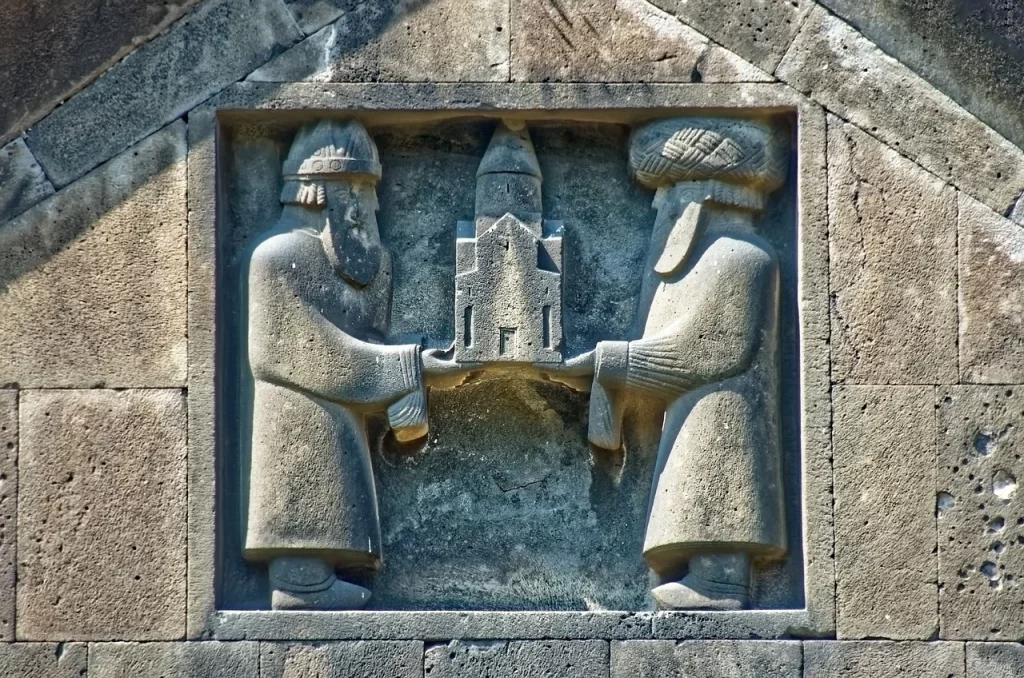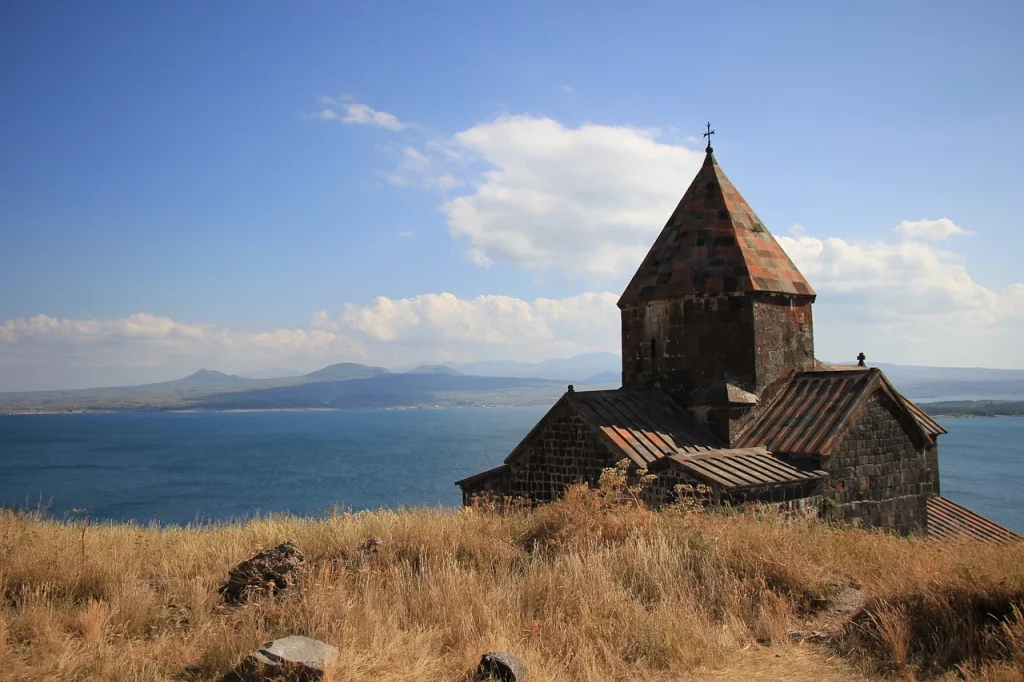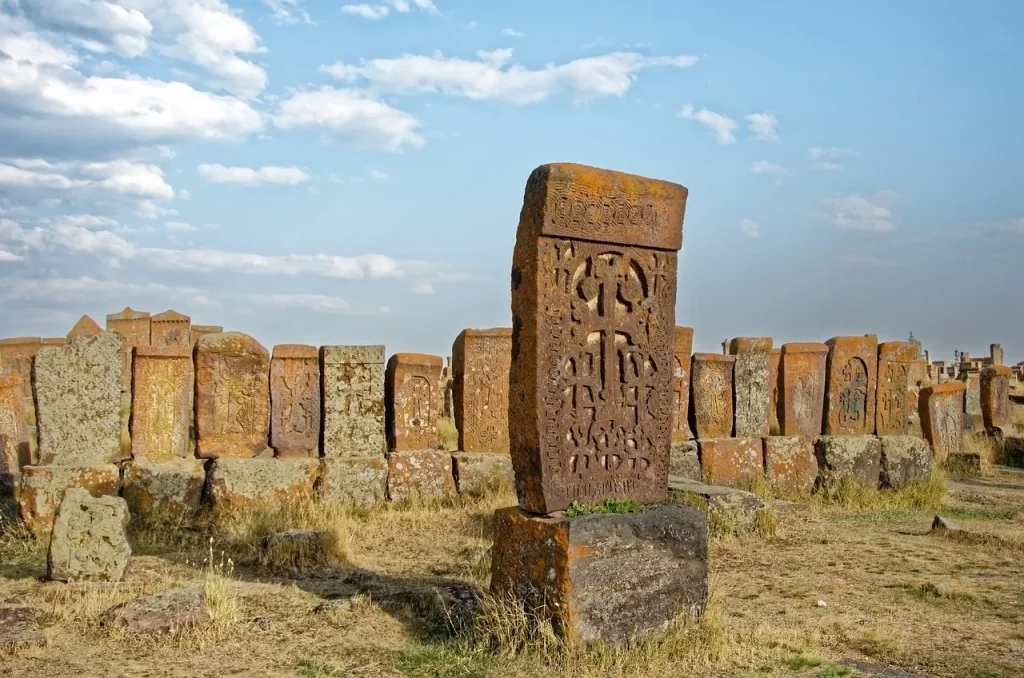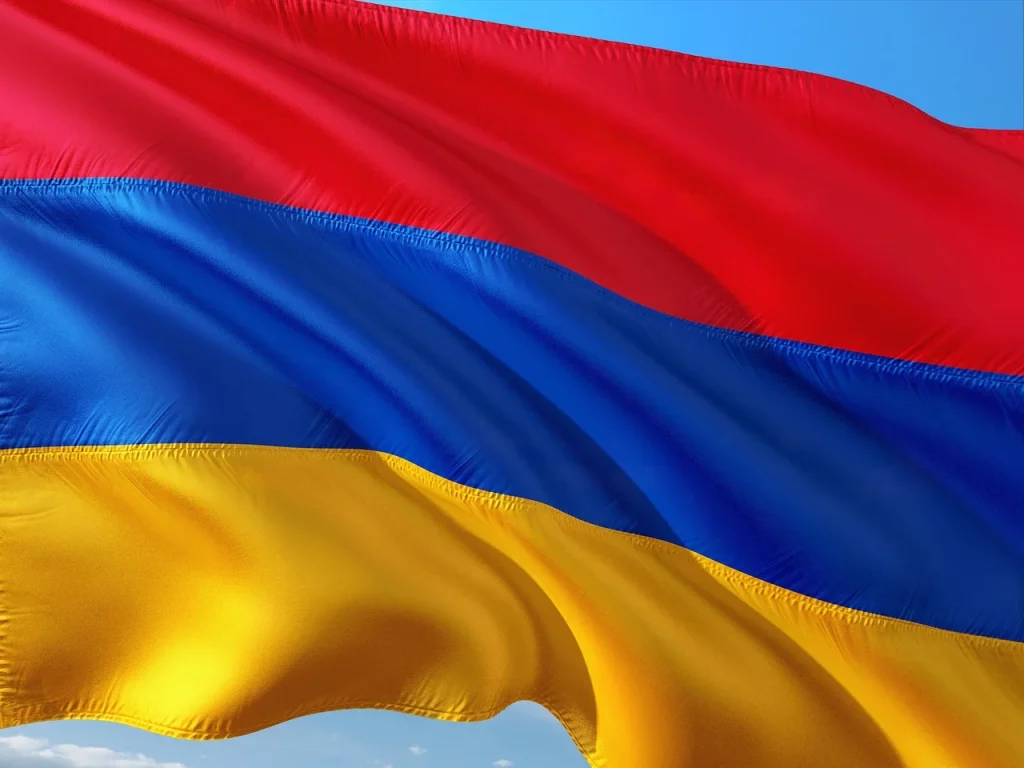Have you ever wondered about the hidden gems of Armenia, a country with a rich tapestry of history and culture? Nestled in the South Caucasus region of Eurasia, Armenia is a land of ancient mysteries and modern marvels.
This is your gateway to exploring this fascinating country. From its majestic mountains to its vibrant traditions, we’ll embark on a journey through some astonishing facts that reveal the heart and soul of Armenia. Get ready to uncover the secrets of this enchanting land, where every corner tells a story!
If the Scriptures are rightly understood, it was in Armenia that Paradise was placed… Armenia is the country of all joys.
George Gordon Byron (Lord Byron)
Armenia Facts
Before we start our exploration through these exciting facts about Armenia, be advised that your understanding will be put to the test. Ensure you read carefully, as I created a quiz at the end of this article to test your knowledge.
- Yerevan, the capital of Armenia, is one of the world’s oldest continuously inhabited cities.
- The Armenian alphabet was created by Mesrop Mashtots in 405 AD.
- Armenia was the first country in the world to adopt Christianity as its state religion in 301 AD.
- The traditional Armenian bread, lavash, is included in UNESCO’s list of Intangible Cultural Heritage.
- Mount Ararat, the national symbol of Armenia, is actually located in modern-day Turkey.
- Armenia is a landlocked country located in the South Caucasus region of Eurasia.
- The Armenian Genocide (1915-1923) resulted in the death of 1.5 million Armenians by the Ottoman Empire.
- Chess is a compulsory subject in Armenian schools.
- The world’s oldest winery was discovered in a cave in Armenia, dating back to around 4100 BC.
- Armenia’s Lake Sevan is one of the largest high-altitude freshwater lakes in the world.
- The Armenian Highland is considered the historical homeland of the Armenian people.
- Armenian cuisine is known for its lavish use of fruits and nuts, especially apricots and walnuts.
- The Wings of Tatev, a cable car in Armenia, holds the record for the world’s longest non-stop double track cable car.

- Armenia has its own unique musical tradition, known for instruments like the duduk.
- The khachkar, or cross-stone, is a distinctive form of Armenian monumental art.
- Tigran the Great ruled ancient Armenia at its peak size in the 1st century BC.
- Armenian dances are a prominent feature of Armenian culture, with traditional styles like the Kochari.
- Ararat Brandy, produced in Armenia, was Winston Churchill’s favorite brandy.
- Armenian is part of the Indo-European language family but forms its own unique branch.
- The Armenian Apostolic Church is one of the oldest Christian denominations, established in the 1st century.
- Armenian jazz has been a significant part of the Armenian music scene since the 1930s.
- The apricot is a national symbol of Armenia and is often associated with the color of the country.
- Armenian literature dates back to the early Middle Ages, with the creation of the Armenian alphabet.
- The Republic Square in Yerevan is known for its distinctive pink tuff stones.
- Armenia is a member of the Eurasian Economic Union and the Commonwealth of Independent States.
- Armenian carpets, known for their intricate designs, are a significant part of Armenian cultural heritage.
- The Vernissage market in Yerevan is famous for its array of handicrafts and art.
- Armenia hosts the Vardavar water festival, where people douse each other with water.

- Garni Temple, a Hellenistic temple in Armenia, is the only Greco-Roman colonnaded building in the former Soviet Union.
- The Armenian National Academic Theater of Opera and Ballet was founded in 1933.
- Armenia is known for its rich biodiversity, with numerous endemic species.
- The Madonna and Child relief in Geghard is a notable example of medieval Armenian art.
- Noravank, a 13th-century monastery, is renowned for its stunning architecture and cliffside setting.
- Armenfilm, established in 1923, is one of the oldest film studios in the world.
- Gregory the Illuminator is recognized as the patron saint of the Armenian Apostolic Church.
- Armenia has a significant diaspora, with more Armenians living outside the country than within.
- Armenian cucumbers, despite the name, are actually a type of melon.
- The Blue Mosque in Yerevan is one of the few mosques in Armenia and a reminder of the Persian influence.

- Sayat-Nova, an 18th-century troubadour, is revered for his poetry and music which blended Armenian, Georgian, and Persian traditions.
- Armenian epic tales, like the Daredevils of Sassoun, are central to its folklore.
- The Khor Virap monastery is a popular pilgrimage site, located near Mount Ararat.
- Haghpat and Sanahin monasteries are notable UNESCO World Heritage Sites in Armenia.
- Armenian stone crosses, or khachkars, are often intricately carved and unique to each region.
- Sergei Parajanov, a renowned filmmaker, created many films showcasing Armenian culture.
- The Erebuni Fortress, founded in 782 BC, is one of the oldest settlements in Yerevan.
- Armenian folk music often features the duduk, a traditional woodwind instrument.
- Armenian miniatures and illuminated manuscripts are significant contributions to medieval art.
- Armenian stone masonry is renowned, particularly in the construction of churches and monasteries.
- The Zvartnots Cathedral, a 7th-century cathedral, is a masterpiece of early medieval Armenian architecture.
- Armenian boxing and wrestling have produced numerous Olympic medalists.
Armenia Myths

We are transitioning to the myths section. Let’s uncover the actual truth behind some common myths about Armenia and illuminate the rich and mysterious tapestry of Armenia’s cultural heritage.
- Armenia is Part of the Middle East
It is actually located at the crossroads of Eastern Europe and Western Asia. It’s bordered by Turkey, Georgia, Azerbaijan, and Iran, making it culturally rich but geographically distinct from the Middle Eastern nations. - Armenian Language is Similar to Russian
The Armenian language is unique and belongs to its own independent branch of the Indo-European language family. It has its own alphabet, created in 405 AD, and is unlike Russian or any Slavic languages. - Armenia Lacks Historical Significance
Armenia is steeped in history! It’s one of the oldest civilizations, with a recorded history dating back over 3,000 years. Armenia was also the first country to adopt Christianity as a state religion in 301 AD. - Armenian Cuisine is Limited to Kebabs
Armenian cuisine is diverse and includes a variety of dishes like Dolma, Lavash (a traditional flatbread), and Harissa. It’s a fusion of Mediterranean, Caucasian, and Middle Eastern flavors. - Armenia is Always Cold
It actually experiences a wide range of climates. While it has snowy winters, especially in mountainous regions, the summers can be quite warm, with temperatures often reaching over 30°C (86°F).
No products found.
Armenia Quotes

From the peaks of Ararat to the depths of its historical roots, Armenia’s saga is one of resilience and beauty. Here are some of my favorite quotes that eloquently express the spirit of this remarkable nation.
As long as one Armenian remains alive, we will not lay down our weapons.
Antranig Pasha
Antranig Pasha, a prominent Armenian military leader, emphasizes the determination and enduring spirit of the Armenian people in their fight for survival and recognition.
The Armenian is a spark of God.
Raffi
Raffi, a celebrated Armenian novelist, poetically captures the essence of the Armenian spirit, likening it to a divine spark, symbolizing purity and resilience.
Armenia is not a geographical area. It is a history of the human spirit.
Hovhannes Shiraz
Hovhannes Shiraz, an esteemed Armenian poet, speaks to the transcendence of Armenian identity beyond mere geography, highlighting its deep historical and cultural significance.
For me, there is one fact of life: the necessity of fighting continuously to the end for our nation and our homeland.
Monte Melkonian
Monte Melkonian, a noted Armenian military commander, reflects his unwavering commitment to the Armenian cause, emphasizing the importance of continuous struggle for the nation and homeland.
Armenia is a magical place. There is an incredibly rich culture there. It’s a place that one has to understand more about to truly appreciate.
Atom Egoyan
Atom Egoyan, a critically acclaimed filmmaker of Armenian descent, highlights Armenia’s rich cultural heritage and suggests that a deeper understanding of its history and culture can lead to a greater appreciation of the country.
Armenia FAQ

Having journeyed through these beautiful quotes, it’s time to move on to the frequently asked questions section. This is your last chance to gather some extra knowledge before the quiz. Don’t disappoint me.
- Why were Armenians targeted?
The Armenian population was targeted primarily during the Armenian Genocide, which started in 1915, under the Ottoman Empire. This tragic event was fueled by political, cultural, and ethnic tensions, particularly amidst the chaos of World War I. The Armenian community, being a Christian minority in the Empire, faced discrimination and was seen as aligned with enemy nations by the Ottoman government, leading to systematic persecutions and mass killings. - Will Armenia join the EU?
At the moment, Armenia is not a member of the European Union. While it maintains cooperative relations with the EU, its membership is complicated by various geopolitical factors, including its relations with neighboring countries and its membership in the Eurasian Economic Union, which is led by Russia. - When did the Armenian Genocide end?
The Armenian Genocide is generally considered to have ended around 1923, coinciding with the establishment of the Republic of Turkey. The period between 1915 and 1923 was marked by mass deportations, killings, and other brutal acts against Armenians in the Ottoman Empire. - What is the significance of Mount Ararat for Armenia?
Mount Ararat holds great cultural and national significance for Armenians. It is considered a national symbol and is prominently featured in Armenian literature, art, and folklore. Although the mountain is now located in Turkey, it is visible from Armenia and is deeply intertwined with Armenian history and identity. - What are the major industries in Armenia?
Armenia’s economy is diverse, with key industries including information technology, mining, agriculture, and energy. The country has seen growth in its tech sector, attracting international investments. Traditional sectors like agriculture remain vital, providing employment and contributing to exports, particularly in wine and brandy production.
No products found.
Armenia Trivia

Welcome to the Ultimate Armenia Quiz! Get ready to test your knowledge, because if you don’t score a point, you might just find that your next coffee tastes suspiciously like Armenian dolma!
Conclusion
As we wrap up this journey through Armenia’s rich tapestry, we’re reminded of how history and culture intertwine to shape a nation’s soul.
From the majestic Mount Ararat, standing tall as a symbol of endurance, to the vibrant traditions and warm hospitality of its people, Armenia tells a story of resilience and beauty.
How has this exploration of Armenia changed your perspective on this ancient land? Let me know in the comments.
6 Sources Used For This Article7 Cool Facts About Armenia- The Cascade Travel
About our Homeland – Aaspa Online
31 interesting facts about Armenia – Armenia Discovery
Interesting Facts About Armenia – Explore Armenia
What’s It Like To Travel Armenia Today? – Tourist Secrets


